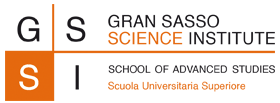Speaker
Description
There is a profound optimism on the impact of deep learning (DL) and AI in the sciences with Geoffrey Hinton concluding that `They should stop training radiologists now'. However, DL has an Achilles heel: it is universaly unstable so that small changes in the initial data can lead to large errors in the final result. This has been documented in a wide variety of applications. Paradoxically, the existence of stable neural networks for these applications is guaranteed by the celebrated Universal Approximation Theorem, however, the stable neural networks are never computed by the current training approaches. We will address this problem and the potential limitations of AI from a foundations point of view. Indeed, the current situation in AI is comparable to the situation in mathematics in the early 20th century, when David Hilbert’s optimism (typically reflected in his 10th problem) suggested no limitations to what mathematics could prove and no restrictions on what computers could compute. Hilbert's optimism was turned upside down by Goedel and Turing, who established limitations on what mathematics can prove and which problems computers can solve (however, without limiting the impact of mathematics and computer science).
We predict a similar outcome for modern AI and DL, where the limitations of AI (the main topic of Smale's 18th problem) will be established through the foundations of computational mathematics. We sketch the beginning of such a program by demonstrating how there exist neural networks approximating classical mappings in scientific computing, however, no algorithm (even randomised) can compute such a network to even 1-digit accuracy (with probability better than 1/2). We will also show how instability is inherit in the methodology of DL demonstrating that there is no easy remedy, given the current methodology. Finally, we will demonstrate basic examples in inverse problems where there exists (untrained) neural networks that can easily compute a solution to the problem, however, the current DL techniques will need 10^80 data points in the training set to get even 1% success rate.
| Day | January 28, 2021 |
|---|

